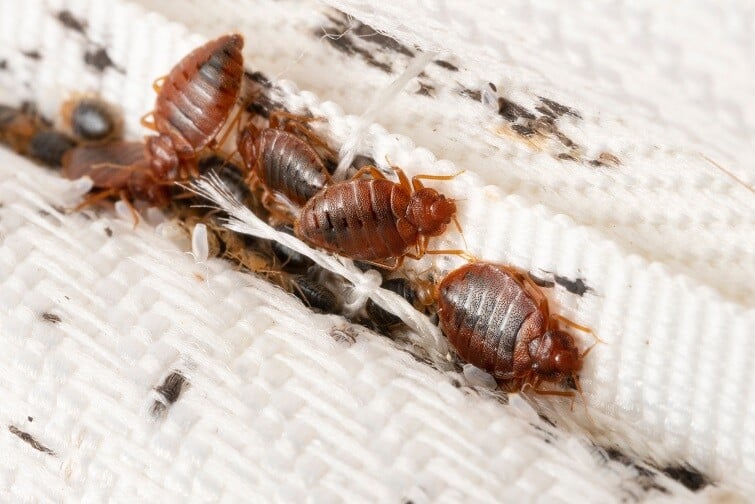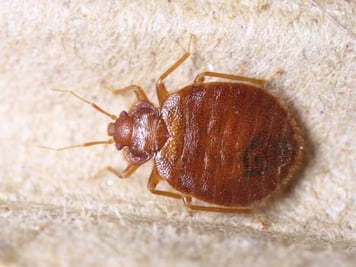Efficient Bed Bug Exterminator: DC Providers with Heat Treatment
Efficient Bed Bug Exterminator: DC Providers with Heat Treatment
Blog Article
Exploring the Scientific Research Behind Bed Insect Heat Treatments as a Lasting Pest Administration Strategy
One such approach that has gotten grip in current years is the usage of heat treatments to combat bed pest problems. The complexities of exactly how warmth properly eliminates bed bugs and the broader ramifications for lasting parasite management techniques make this a subject worth exploring even more.
Bed Insect Warm Treatment Process

Thermal Fatality Point for Bed Pests
Subjecting bed pests to elevated temperature levels beyond their thermal tolerance array is crucial for accomplishing effective eradication in warmth therapy procedures. The thermal death point for bed bugs refers to the temperature at which these insects can not survive. Research study suggests that bed insects start to die when revealed to temperature levels above 113 ° F(45 ° C) for a sustained duration. As the temperature level increases, so does the mortality rate of bed pests. At around 118 ° F(48 ° C ), bed insects begin to pass away rapidly, with a mortality rate of nearly 99% within minutes of exposure. This demonstrates the sensitivity of bed pests to heats and highlights the effectiveness of heat therapies in removing invasions. By getting to and keeping temperatures above the thermal death factor for bed pests, pest administration experts can guarantee detailed elimination of bed pest populaces, including hard-to-reach locations where chemical treatments might be much less efficient. Comprehending the thermal fatality point for bed pests is important for implementing effective warmth therapy strategies and attaining lasting pest management results.
Benefits of Heat Treatments
Having developed the critical thermal death point for bed insects, it is necessary to currently discover the considerable benefits that heat treatments provide in effectively getting rid of these durable bugs. When compared to conventional chemical techniques, heat treatments existing several essential benefits. One of the key advantages is that heat can permeate deep into splits and gaps where bed insects conceal, making sure that even the most hard-to-reach areas are heated up to dangerous temperature levels. This detailed technique not just kills live bugs yet additionally targets bed insect eggs, stopping future invasions.
Moreover, heat therapies are non-toxic and eco-friendly, making them a lasting insect management method. Unlike chemical pesticides, warm treatments do not leave unsafe deposits that can posture dangers to human health or the atmosphere. This element is especially essential in delicate environments such as health centers, colleges, and property locations where chemical usage might not be desirable.
Additionally, warm therapies have a high success price in getting rid of bed insect invasions in a single therapy, lowering the need for several sees and decreasing disturbance to passengers. This performance not just saves money and time however likewise provides assurance to those handling bed insect problems.
Effectiveness of Warm Therapy

Heat treatments have actually the included benefit of eliminating bed insect eggs, which are often resistant to traditional chemical therapies. On the whole, the performance of warm therapies in eradicating bed pest problems makes them a sustainable and reputable bug monitoring approach.
Lasting Insect Administration Perks
Carrying out lasting pest monitoring practices uses long-lasting advantages for both the atmosphere and public health. By utilizing methods such as warmth therapies for pest control, we can reduce the reliance on harmful chemical pesticides this website that can have unfavorable impacts on ecological communities and human health - bed bug treatment. Sustainable pest management methods aid in maintaining biodiversity by targeting certain insects without harming non-target microorganisms, thus keeping a well balanced ecological community
In addition, sustainable pest monitoring techniques add to the general health and wellness and wellness of the general public. By lessening direct exposure to hazardous chemicals used in standard pest control methods, warmth treatments give a safer option for pest monitoring in domestic, business, and public spaces. This decrease in chemical usage likewise aids in stopping chemical residues from polluting water, air, and soil, safeguarding ecological top quality.
Conclusion
To conclude, bed pest heat treatments have actually been shown to be a reliable and sustainable parasite management technique. The thermal fatality factor for bed pests makes them susceptible to heat therapies, which have countless benefits over traditional chemical treatments. The efficiency of warmth therapies in removing bed bug invasions while decreasing ecological impact highlights the potential of helpful resources this method as a sustainable service for bug control.
The bed pest warmth therapy process includes elevating the temperature within infested areas to a level that efficiently gets rid of bed insects and their eggs. By reaching and preserving temperatures over the thermal fatality factor for bed pests, parasite monitoring specialists can make certain comprehensive removal of bed pest populaces, consisting of hard-to-reach locations where chemical therapies may be less efficient. One of the main advantages is that heat can penetrate deep into cracks and crevices where bed pests conceal, making sure that also the most hard-to-reach areas are heated up to deadly temperatures. Unlike chemical treatments that might leave behind immune populations, heat therapies supply a safe and ecologically friendly option that can permeate deep into furnishings, walls, and other hard-to-reach locations where bed insects hide.
The thermal fatality factor for bed bugs makes them susceptible to warmth treatments, which have numerous benefits over standard chemical treatments.
Report this page